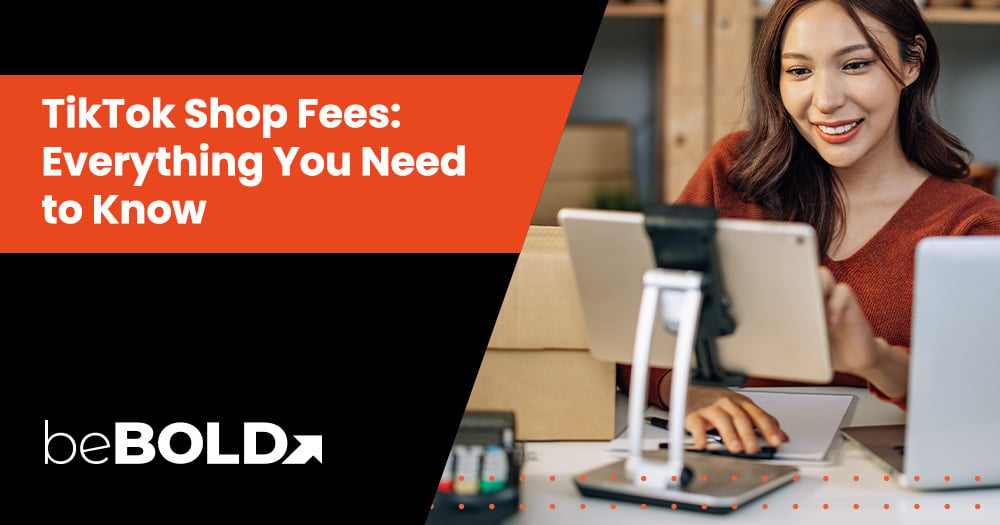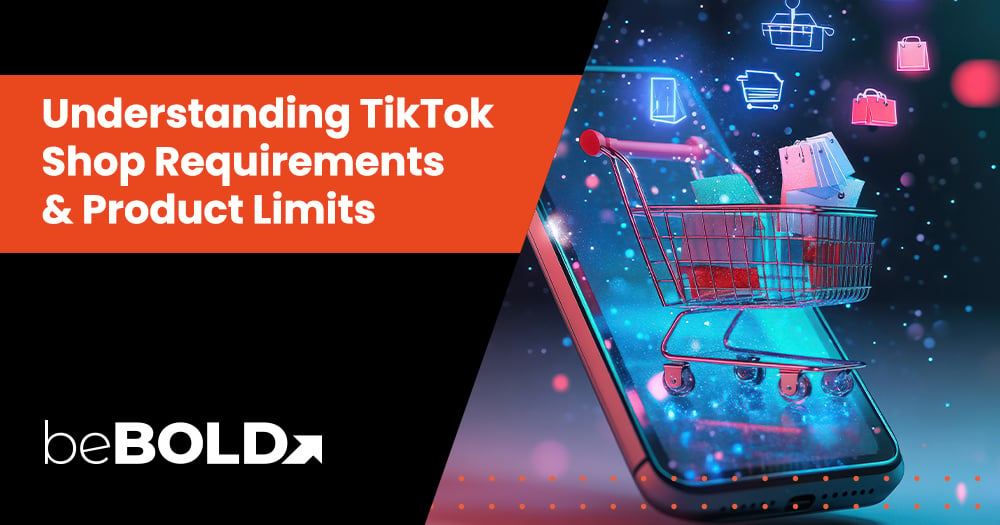Key Summary: TikTok Shop Fees & Profit Optimization
- As of April 1, 2024, all sellers will be charged a standard 8% referral fee per order.
- TikTok will stop subsidizing fees for new and growing sellers, unlike in 2023.
- TikTok now applies a full commission structure, including fees on cancelled and returned orders.
- Even if an item is returned or refunded, sellers still pay a 1.8% fee of the original order value.
- A 1.8% referral fee applies even on buyer-initiated cancellations or delivery failures.
- Referral fee is based on product value after discounts but before taxes and shipping.
- The platform aims to drive serious selling behavior and efficient return management.
- All sellers now pay a fixed fee per sale—no discounts or subsidy programs.
- Referral fees are now charged even for refunded, cancelled, or failed deliveries.
- Sellers are charged a 1.8% referral fee on refunded/cancelled orders regardless of the reason.
- The 1.8% is calculated on the full item value (after discounts), not the refunded amount.
- The 8% fee is based on the product’s final discounted price (excluding shipping and taxes).
- Helps sellers estimate exact deductions and price their products accordingly
Are TikTok Shop’s fees eating into your profits? Understanding referral fees, marketplace commissions, and transaction charges is crucial for sellers. Costs vary by region and product category, making financial planning complex. Shipping expenses add another layer—should you handle logistics independently or use TikTok’s services? Evaluating these factors can help you optimize your earnings and avoid unexpected costs.
Understanding TikTok Shop Fee Structure

The fee structure of TikTok Shop is multifaceted, combining various components like referral fees, marketplace commission fees, and transaction fees. Distinct rates apply to each, varying from product to product and region to region. For instance, the referral fee in the United States amalgamates marketplace commission and transaction fees into one, simplifying the fee process for sellers. As the fee structure may be modified, staying updated on the differentiating fees is paramount for sustainable profit margins.
Referral Fee
The referral fee explicitly targets the US market. It is a consolidated fee structure that intertwines elements of the marketplace commission and transaction fees. This arrangement eases the selling experience by collating all costs of selling a product through TikTok Shop for a single fee. As of April 1, 2024, the referral fee is 6%, slated to rise to 8% on July 1, 2024.
The formula for calculating the referral fee is as follows:
Referral fee = (Customer payment + Platform discount - Tax) x Fee rate
Here's a tabular representation of the referral fee calculation:
|
Elements |
Explanation |
|
Customer Payment |
The amount paid by the customer for the product |
|
Platform Discount |
Any discount given by TikTok that reduces the product price |
|
Tax |
Sales tax applied to the transaction |
|
Fee Rate |
The percentage charged is based on the specific product category |
This structure, along with new seller referrals like discounts for freshly onboarded merchants, seeks to reduce barriers for new sellers while ensuring a streamlined financial system.
Referral Fee Calculation
Formula:
Referral Fee = 6% × (Customer Payment + Discount - Tax)
|
Order Type |
Referral Fee |
|
Successful Order |
6% × ($102 + $5 - $2) = $6.30 |
|
Partially Refunded |
6% × ($51 + $2.50 - $1) = $3.15 |
|
Fully Refunded |
No fee charged = $0.00 |
Refund Admin Fee
Formula:
- For partial refund: 6% of original fee × 50% × 20%
- For full refund: 6% of original fee × 20%
|
Order Type |
Refund Admin Fee |
|
Partially Refunded |
$6.30 × 50% × 20% = $0.63 |
|
Fully Refunded |
$6.30 × 20% = $1.26 |
Marketplace Commission Fee
The marketplace commission fee plays a significant role in the TikTok Shop fee structure, primarily for Southeast Asian markets like Indonesia, Malaysia, the Philippines, Singapore, Thailand, and Vietnam. The platform charges a percentage of the sale price for each sale executed through it. This commission is variable across product categories.
The marketplace commission fee computation goes like this:
Marketplace Commission Fee = Selling price x Fee rate
Take a look at the following table for an easy understanding:
|
Elements |
Explanation |
|
Selling Price |
The price at which the product is sold |
|
Fee Rate |
The percentage charged is based on the specific product category |
Remember, the marketplace commission fee doesn't consider shipping fees or platform discounts.
Marketplace Commission Fee – Explained with Example
|
Element |
Explanation |
Example |
|
Selling Price |
The price at which the product is sold |
$100 |
|
Fee Rate |
A percentage based on the product category |
8% |
|
Shipping Fee |
Not included in the commission calculation |
$5 (excluded) |
|
Platform Discount |
Not included in the commission calculation |
$10 (excluded) |
Formula
Selling Price × Fee Rate
$100 × 8%
Marketplace Commission Fee
$8.00
Transaction Fee
The transaction fee, which applied to each transaction, played a significant role in the sales cycle until it was eliminated on April 1, 2024. This move is an attempt by TikTok to simplify its fee structure for sellers and make the platform more attractive by reducing the cost burden per transaction.
However, before it was eliminated, the transaction fee was computed as follows:
Transaction Fee = Flat Rate Per Sale
The following table simplifies the understanding:
|
Elements |
Explanation |
|
Flat Rate |
A fixed amount is charged per sale |
It was a flat rate fee with no variability, bringing ease to the financial management for the sellers.
Example Calculation
|
Order Value |
Flat Rate Charged |
Transaction Fee |
|
$20 order |
$0.50 |
$0.50 |
|
$100 order |
$0.50 |
$0.50 |
Others
Besides the primary referral, marketplace commission, and transaction fees, selling on TikTok Shop invites additional costs that sellers must anticipate:
- Shipping Costs: Sellers who use TikTok's logistics services may incur additional costs. These depend on factors such as weight, volume, and distance.
- Advertising Costs: Digital advertising is essential to effectively reach customers on TikTok, but it can also add further costs to your business.
- Taxes: Sales tax, determined by local laws based on the buyer's location, adds to the overall costs from TikTok Shop.
- Refund Administrative Fee: This fee is charged when a customer cancels a transaction or returns a product during the return period.
These additional costs contribute to the overall fee structure in selling through TikTok Shop and should be considered while budgeting.
How to Calculate TikTok Shop Fees? (Formula, explanation, example)

To calculate TikTok shop fees, use this formula: (Listing Price + Shipping Cost) x Commission Rate + Fixed Fee. For instance, if the item costs $50, shipping is $5, the commission rate is 10%, and the fixed fee is $2, the calculation would be: ($50 + $5) x 0.10 + $2 = Total Fees.
Upcoming Changes in TikTok Shop Fees

TikTok Shop's fee structure is not static and has seen significant changes since its inception, particularly in the United States. As of April 1, 2024, TikTok transitioned from a flat commission fee structure to a category-dependent marketplace commission fee structure.
Moreover, to simplify the cost structure for merchants and make the platform more appealing, the $0.30 transaction fee was also eliminated. Come July 1, 2024, commission fees are set to increase up to 8%, which underscores the need for sellers to stay updated.
Strategies to Minimize TikTok Shop Fees & Maximize Profits

While the TikTok shop fee structure is inevitable for anyone selling through this platform, strategic planning can help keep costs in check and enhance profitability. Optimization strategies such as strategic product pricing, tapping into TikTok's promotional tools, and efficient management of shipping costs can significantly impact your bottom line. Additionally, actively reducing return risks, regularly tracking and analyzing fee impacts and taking advantage of new seller incentives can enhance the benefits you reap from TikTok Shop.
Price Your Products Strategically
Innovative pricing on TikTok Shop involves factoring in all associated fees the platform charges. Research fee rates, market dynamics, and competition to set appealing prices that ensure satisfactory profit margins.
Consider benchmarking with competitors, pricing higher for exclusive items, testing prices, and adjusting based on feedback. Find the sweet spot where pricing covers costs yet remains competitive and reasonable for customers.
Compare TikTok Shop and Amazon – See the Key Differences
Leverage TikTok’s Promotional Tools
Using TikTok's promotional tools can enhance visibility and reach more TikTok users and customers. Services include ads and featured placement in the marketplace, which may come at a cost but can boost sales. Influencer marketing on TikTok can expand your product reach by leveraging creators' follower base.
Utilizing trends like hashtags and challenges can increase organic visibility. Successful promotion entails creating engaging, innovative, and authentic content tailored to TikTok's user base.
Optimize Shipping & Fulfillment Costs
Shipping costs are a significant part of TikTok Shop's expenses. Optimize these costs to maintain profit margins. Factor in shipping costs when using TikTok's logistics services. Consider offering free shipping for larger orders. Reduce product weight and dimensions to lower shipping fees.
Monitor delivery performance for faster payouts. Use an order management system to streamline fulfillment, reduce errors, and improve customer satisfaction. Partner with reliable logistics for competitive rates and dependable services.
Reduce Return & Chargeback Risks
High return rates can be costly for TikTok Shop sellers. To minimize return risks, ensure product quality, accurate information, and excellent customer service. Accurate product descriptions, images, and quality packaging can reduce return chances.
Clear communication and prompt issue resolution build positive customer relationships. Secure payment processes and maintaining transaction records help handle Amazon vendor chargebacks effectively.
Track and Analyze Fee Impact Regularly
Track and analyze fees on TikTok Shop regularly using the platform's analytics. Use tools for efficient integration with TikTok Shop, which simplifies fee tracking and provides detailed financial insights. Monitoring fees routinely helps manage expenses and adapt strategies for profitability.
Take Advantage of New Seller Incentives
TikTok Shop offers new seller incentives designed to help newcomers get started. Under its Referral Fee Promotion, new sellers who achieve the "Active" status in the Seller Center can benefit from a lower referral rate and enough financial leverage to establish themselves on the platform.
This initiative, with lowered entry barriers, can significantly help new sellers kickstart their TikTok business journey. Sellers should remain updated with such incentives and promotions to maximize their financial advantages and optimize returns.
Influencer Payment Structures Over Recent Years

According to research by Influencer Marketing Hub, over the last three years, TikTok Shop has significantly restructured how it rewards influencers, moving from a static, flat-rate model to a dynamic, performance-driven payment ecosystem. This evolution reflects the platform's broader strategy to align creator incentives more closely with actual sales impact and campaign performance.
In 2022, the influencer payment model leaned heavily on flat-rate payouts. It was straightforward — creators were paid a fixed amount for brand collaborations, regardless of the outcomes. While easy to manage, this model lacked motivation for influencers to drive conversions. A small portion of payments came from a percentage of sales, but product-level commissions and performance incentives were largely non-existent.
By 2023, TikTok began shifting the gears. Flat rates were still present but had been reduced to make space for more outcome-based compensation. Product-level payments started gaining traction — allowing creators to earn differently based on the items they promoted. More importantly, tiered incentives entered the picture. This structure allowed top-performing influencers to unlock bonus rewards based on sales volume or conversion milestones, introducing a gamified layer to influencer marketing.
In 2024, the system has matured. It now offers a balanced mix of flat-rate stability and performance bonuses. Influencers are not just content creators — they’re becoming micro-entrepreneurs. They are incentivized to select products with higher commission structures, create content that drives actual purchase behavior, and push for volume to reach higher incentive tiers. This shift is a clear signal from TikTok: creators who understand commerce and influence purchasing decisions will win the biggest rewards.
In essence, TikTok Shop’s influencer payment transformation is not just a payout model change — it’s a mindset shift. Influencers are no longer just storytellers; they’re key players in the social commerce engine.
Maximize Profits on TikTok Shop with beBOLD Digital—Cut Costs, Boost Sales!
Struggling to understand TikTok Shop fees and maximize your profits? At beBOLD Digital, we simplify the costs, helping you optimize your sales strategy. From commission rates to transaction fees, we ensure you get the best returns on your investment. Let our experts guide you through the TikTok Shop ecosystem with proven strategies. Boost your sales and minimize costs—partner with beBOLD Digital today! Contact us now!
Conclusion
TikTok Shop provides a profitable platform for businesses to sell products directly to consumers. Sellers must understand and manage fees such as referrals, marketplace commissions, and transaction fees to succeed. By strategically pricing, using promotional tools, optimizing shipping costs, and efficiently handling returns, sellers can enhance their profitability on TikTok Shop.
Frequently Asked Questions
Can sellers negotiate TikTok Shop fees?
No, sellers cannot negotiate TikTok Shop fees. TikTok pre-established fees vary based on product category or market region.
Are there shipping fees with TikTok Shop?
Yes, there are shipping fees with TikTok Shop. If a seller chooses to utilize TikTok’s logistics services, additional shipping costs may apply, which should be factored into their selling price.
Does TikTok Shop offer discounts on fees for new sellers?
Yes, TikTok Shop offers a Referral Fee Promotion for new sellers. Under specific conditions, the promotion offers a discount on referral fees, making the platform more accessible to new merchants.
How often do fee structures change?
While it's not a regular occurrence, TikTok Shop has discretion over its fee structures and can alter them based on business strategies. Although standard fees are longstanding, promotional discounts or waivers can be introduced for short durations. Consequently, sellers should stay updated.
How does TikTok Shop work?
TikTok Shop is more than just a shopping tab—it's a full-fledged social commerce ecosystem. It lets users buy and sell products directly through live streams, short videos, and a dedicated storefront within the app. Brands and creators can start TikTok Shop to list their products and promote them seamlessly through content. The experience is frictionless for buyers—they can complete purchases without ever leaving TikTok. There’s also a powerful affiliate program in place, allowing influencers to earn commissions for every sale driven through their content.
When will I get paid with TikTok Shop?
TikTok Shop processes payouts fast—but not instantly. Payments usually land in your linked bank account 3–7 days after the order is marked “delivered.” You can keep tabs on everything inside the Seller Center. A few things can cause hiccups—like disputes, pending verifications, or bank delays—so make sure your account details are all in check for smooth cash flow.
How can TikTok sellers maximize profitability?
he key to success on TikTok Shop lies in blending content with commerce. Sellers who create thumb-stopping product videos, collaborate with influencers, and tap into TikTok Live to showcase products tend to convert more. Smart pricing strategies, high-quality visuals, and fast customer support build trust and drive repeat purchases. For sustained growth, sellers should track performance metrics closely and fine-tune their content and product offerings based on evolving trends.
How can you manage TikTok Shop fees?
Understanding the fee structure is crucial to staying profitable. TikTok charges referral fees, shipping charges, and sometimes transaction-based costs. To offset these, sellers can factor in the fees while pricing, upsell through bundles, and increase the average order value. Leveraging promotional tools smartly and negotiating efficient logistics can help cut down on overhead. Keeping a close eye on evolving fee terms ensures that sellers don’t get caught off guard.
Looking to maximize your profits on TikTok Shop while keeping fees in check? beBOLD Digital specializes in optimizing your sales strategy, reducing costs, and boosting conversions. Our experts help you navigate TikTok’s evolving fee structure and leverage promotional tools effectively. Book a free consultation with us to start scaling your TikTok Shop business!







Comments